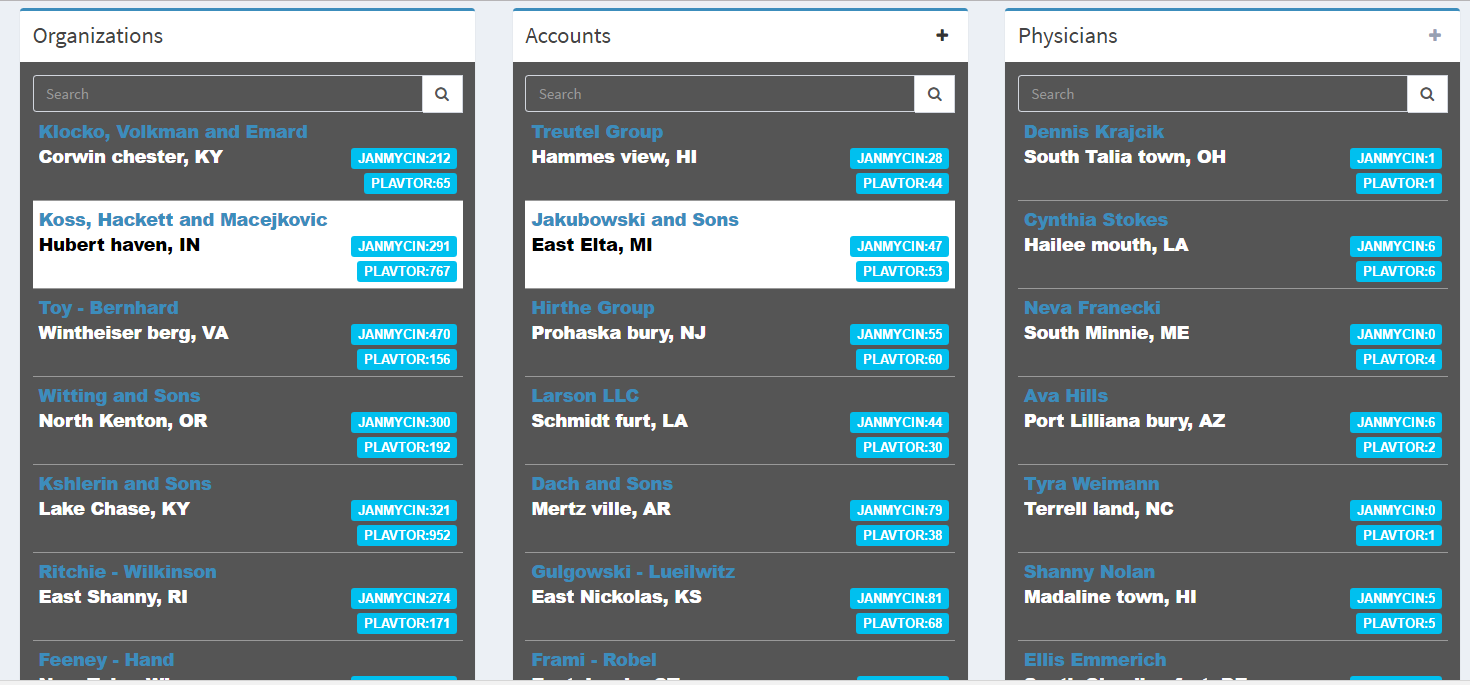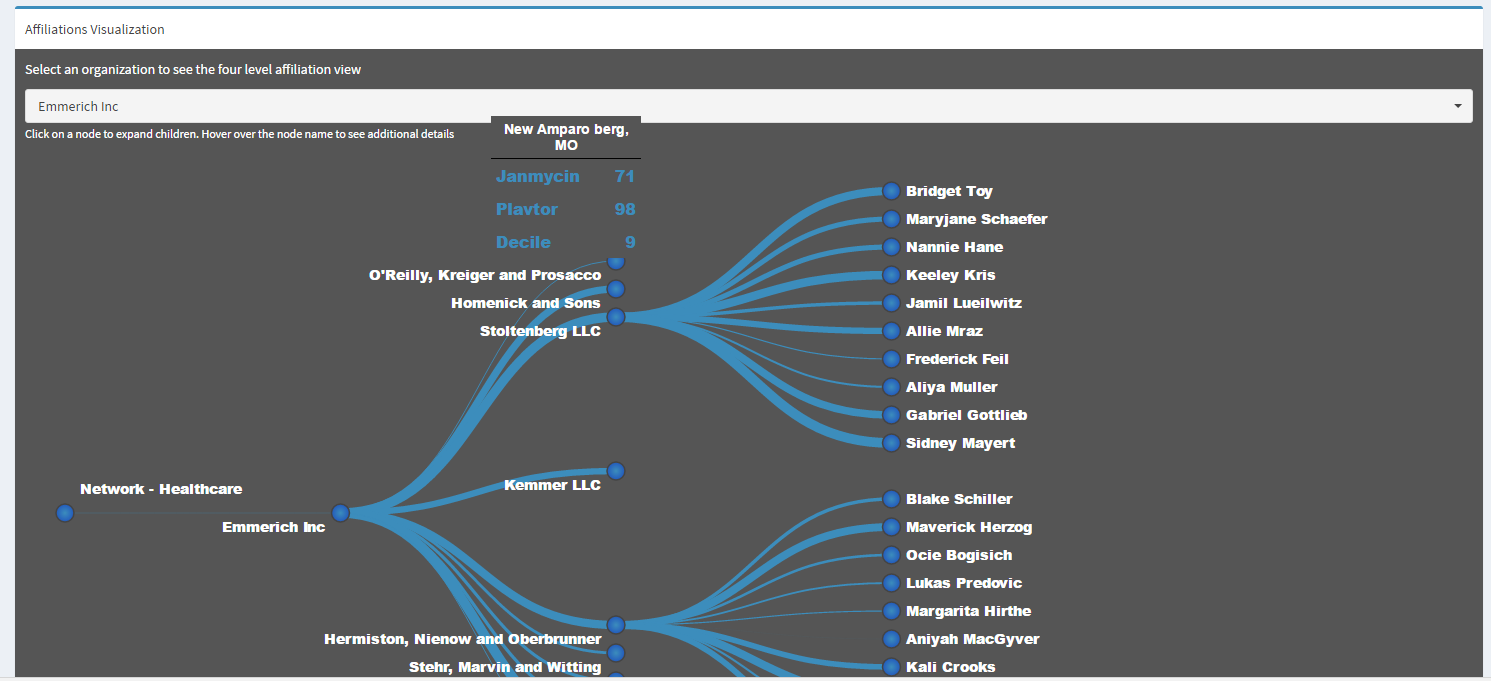Customer Hierarchy management is of key importance to organizations. This information may be available to HQ through third-party data sources. However, it is important to corroborate this information with the help of other organisational stakeholders responsible for managing the relationship with these entities.
A web-based multi-level hierarchy management interface is desirable to manage such a customer hierarchy. Such a system must be able to upload master lists of various entities at all levels of the hierarchies, allows for quick reassignment capability across hierarchy levels and intuitively supports multi-assignments. Additionally, this system must be able to track each change made to the hierarchy, provide detailed analytics to internal stakeholders, and provide a high-level summary of entities pending review to support the customer hierarchy review process.
There are several potential applications for such an interface in different industries. Some of these are:
- MD-Hospital-Organization-Network affiliations for the Healthcare Industry
- Advisor-Team-Organization affiliations for the Asset Management Industry
- Reporting relationships for unstructured/indirect sales channels
- Stockist-Distributor-Retailer relationships
Let’s delve into more detail with the help of an example from the healthcare industry. With the industry's evolution in the last few years, it has been observed that most blockbuster pharmaceutical products have gone off-patent while the primary focus has been moved to the commercialization of speciality products. There is also a movement towards consolidation in the industry, with several single MD practices being brought under larger formularies of larger chains to improve purchasing power. This paradigm shift has resulted in the increased importance of gathering field intelligence to understand better the various relationships between stakeholders in the customer ecosystem. Some of these are:
- Prescriber – Prescriber (Key Opinion Leader)
- Prescriber – Account
- Account – Organization
- Organization – Specialty Networks
- Nurse Practitioners / Clinicians – Account
Our hierarchy management system can track multi-level hierarchical entities and manage their relationships. It also allows key attributes of such relationships to be captured, such as primary affiliation, influence levels, types of relationships, etc. The intuitive UI allows field representatives to quickly and easily manage their target prescribers and review all their relationships to ensure accurate alignments. Accurate alignments are essential to achieve accurate sales credits, marketing promotion targeting, and physician outreach programs within a healthcare organization. Additionally, these alignments allow organizations to gauge the true value of entities in their customer hierarchy and devise strategies to support that entity. The accuracy of these alignments is critical to empowering analytics to support such decision-making.

figure 1: A sample alignment management screen

Figure 2: Hierarchy visualization, including sales, and flow weights across entities aggregated information at the higher hierarchy level, can help the organization understand the true value of that entity and devise strategies to support the entity.
For more information, reach out to us at Incentius.










